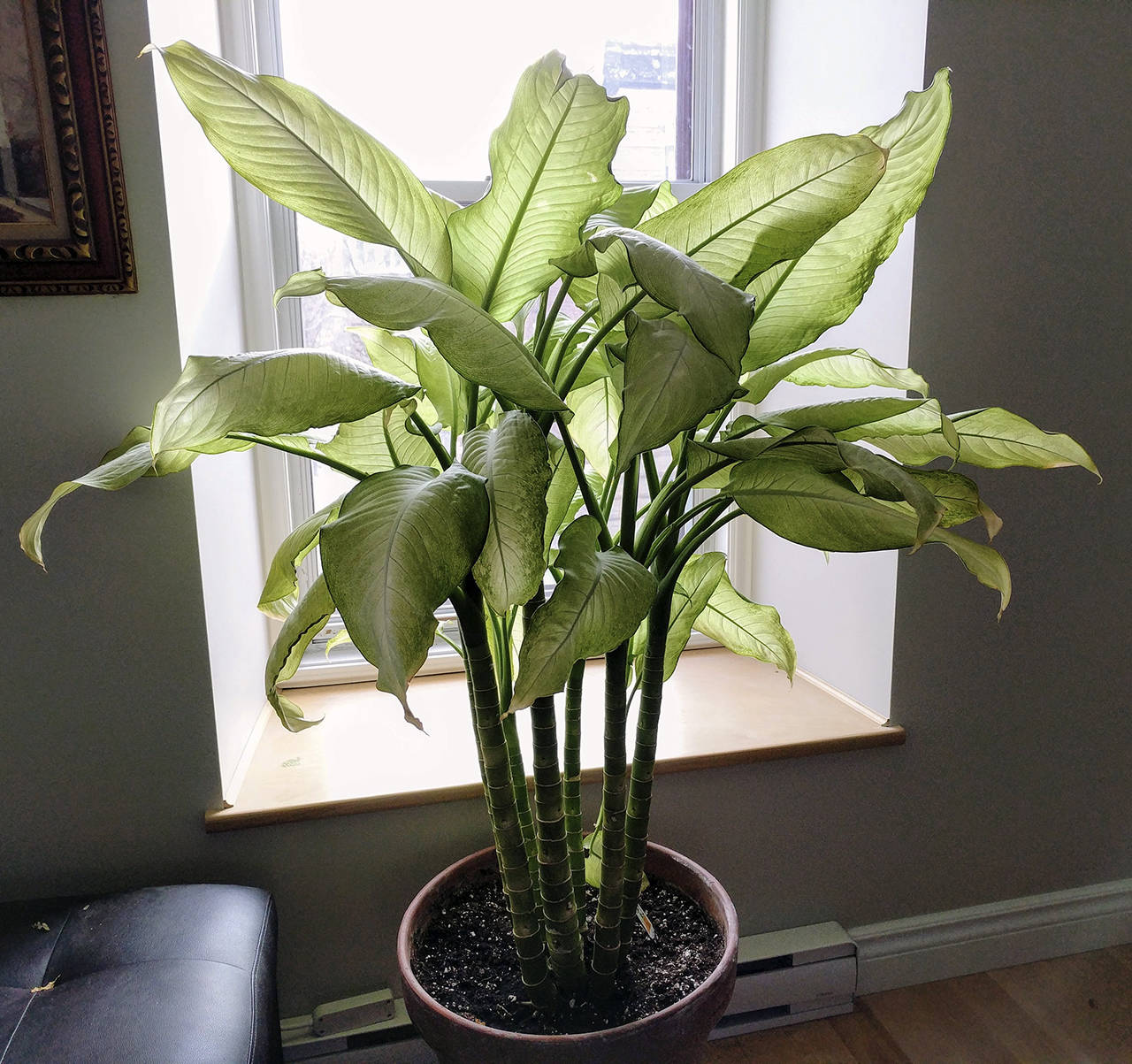By Dauna Koval
WSU Master Gardener
Winter is closing in. The rains are just beginning. For all but the most avid gardeners, it’s time to come in out of the wet and cold.
But that doesn’t mean plant lovers have to wait until the next growing season. Many plants thrive indoors and help us get through the uninviting dampness for which the Pacific Northwest is so noted. If you have windows and light, there are plants to grow!
Before buying out an indoor nursery store, there are a few things to consider. The first is light. Think of this in terms of where you might place a plant. Where are your windows? Which direction does the sun come from? How strong is the light? How many hours of daylight does each season offer? Plants will be labeled with the type of light they need:
Direct — unobstructed light coming from the south.
Bright filtered — light through a translucent curtain or an outside tree, from the south.
Bright but not direct — morning light from the east, or afternoon light from the west, or reflected from a bright surface.
Medium — from a north-facing window or obstructed (perhaps by a building).
Poor — in the shadows; reserved for shade-loving plants, such as ferns.
Most plants will need 12 to 16 hours of daylight to maintain active growth, but many rest during the winter, when our daylight drops to 8 to 10 hours. Holiday plants are often primed to bloom for a short time during the winter, and are sometimes difficult to get to rebloom.
Temperature is also a concern. Choose plants that prefer normal room temperature — about 65 to 75 degrees, not varying more than five or 10 degrees. Be careful of temperature shifts, especially in direct southern light during winter. On bright sunny days, even if it is cold outside, the inside of a window can heat up and literally cook a plant. Along the same lines, be sure to keep away from drafts and avoid placing your plants too close to heat sources.
Read the plant label to see how often and how much to water your plant. That will also depend on what type of pot you place it in. Unglazed clay pots dry out sooner than plastic or glazed pots. The size of the pot relative to the size of the plant or how much root material the plant has also affects how much water it needs. More soil, less water. More roots, more water.
Plants need good drainage. Don’t let the roots sit in water where they can rot. Pots without a drainage hole in the bottom will be a problem. To prevent ruining furniture or windowsills, place a drainage saucer under the plant.
A plant’s normal habitat will indicate the amount of humidity it needs. That’s not the same as how much you water the plant. Plants take up the water you give them from the soil through their roots. They will release it above ground through their leaves. How much they release depends on the water content of the air around the plant (humidity).
A plant from a tropical rainforest will need you to keep its air hydrated, with occasional misting or by setting it in a tray of stones that you have filled with water. But a cactus from an arid desert prefers the other end of the humidity spectrum (and, by the way, requires much less care than most other plants). As you can tell from these examples, it’s best to group plants with similar needs together.
Here are a few notes on some common holiday plants:
Christmas or Thanksgiving cactus — a tropical plant often blooming during the holidays that needs bright light and moderate water while blooming. It doesn’t need extra humidity, but can do better than other cacti in the company of other plants.
Anthurium — a tropical rainforest plant that needs moderate indirect light, high humidity and lots of water.
Poinsettia — a finicky plant that needs bright indirect light, thorough watering, high humidity and slightly cooler temperatures.
Amaryllis — a fast-growing plant, great for kids, which needs bright indirect light and not a lot of water. Buy it in a kit that provides the right kind of soil.
Dauna Koval is a “warmer weather” WSU Master Gardener, Class of 2016. She lives half time in Ocean Shores and half time in Renton, and she fully utilizes windows in both places. To learn more about the WSU Master Gardener Program in Grays Harbor and Pacific Counties, visit PNWMG.org.


